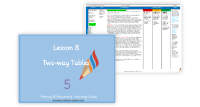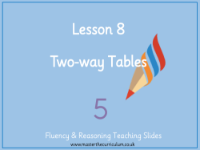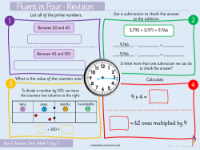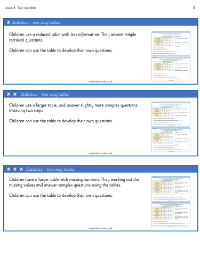Statistics - Two way Tables - Planning

Maths Resource Description
In the second week of Autumn Term, Year 5 students are introduced to the concept of two-way tables in their statistics curriculum. The lesson begins with a starter activity that prompts students to recall previously learnt material. The main class teaching input focuses on understanding and interpreting data from two-way tables. Students are encouraged to engage in partner discussions to answer questions about the data, such as the number of people in different job roles or locations, and to use the tables to find total figures. Group work further reinforces this learning, with children working together to extract totals and other specific information from the tables provided. Key vocabulary such as 'two-way', 'table', 'column', 'row', 'read', 'interpret', 'compare', 'difference', 'combined', 'altogether', 'add', 'subtract', and 'data' are highlighted, with resources like vocabulary cards and definitions available to support understanding.
As the lesson progresses, the children are challenged to deal with incomplete two-way tables, using addition to calculate missing totals. They are encouraged to create their own questions based on the data, which range from simple retrieval to more complex calculations. The plenary involves a reasoning activity where students must determine how to find missing information, such as using subtraction to work out a total. This session aims to solidify their ability to read, interpret, and manipulate data within two-way tables. Differentiated worksheets are used for independent learning, allowing children to work at varying levels of difficulty, from basic retrieval to working out missing values and answering complex questions. The lesson concludes with a reflective 'Give me five' exercise, where students evaluate what they've learnt, the skills they've used, and what they found challenging, ensuring they remember the key points from the lesson.




